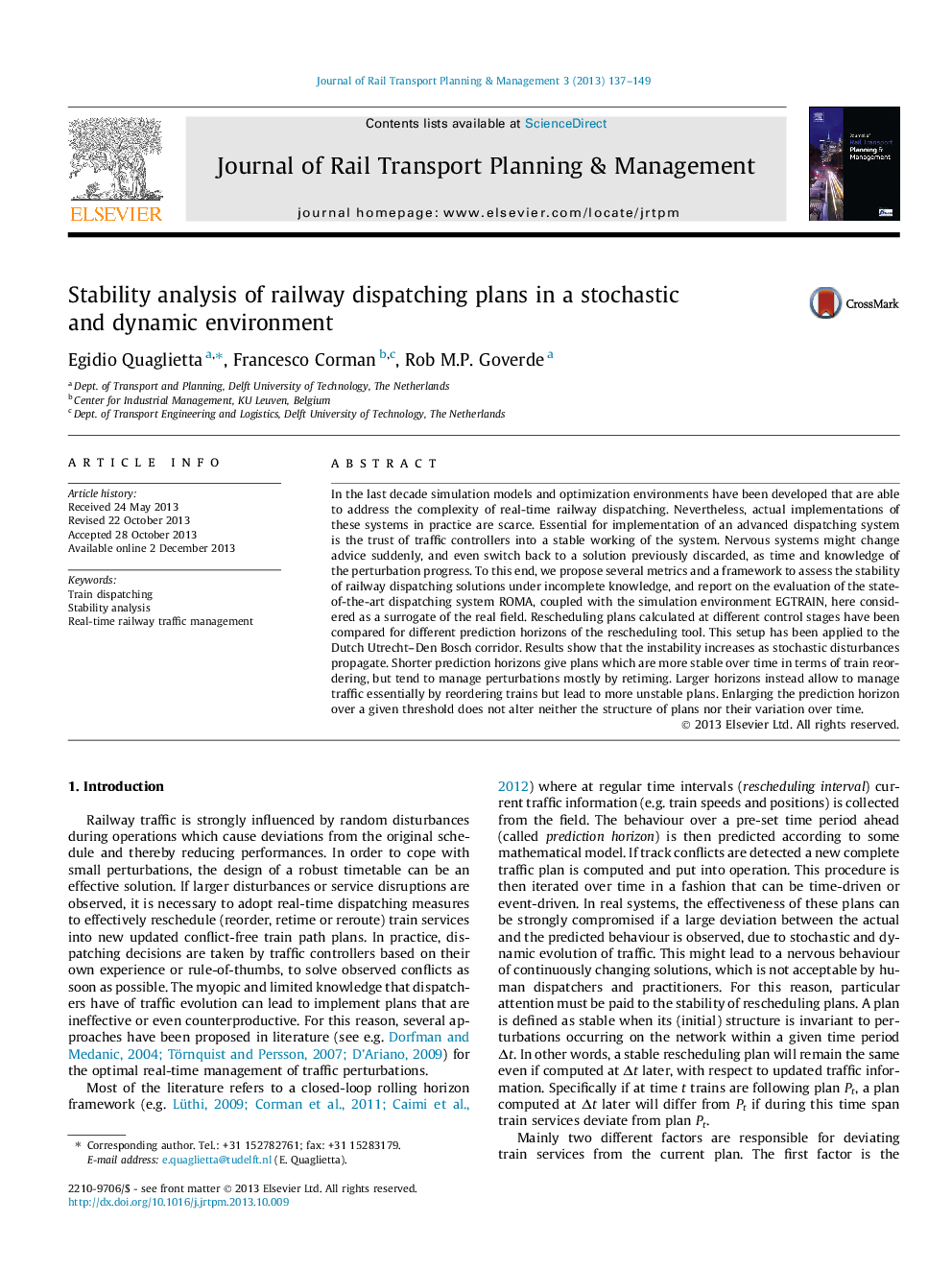| Article ID | Journal | Published Year | Pages | File Type |
|---|---|---|---|---|
| 286429 | Journal of Rail Transport Planning & Management | 2013 | 13 Pages |
•Stability of railway rescheduling plans is analysed under a stochastic environment.•A dispatching tool is integrated in a closed-loop with a railway traffic simulator.•Rescheduling plans become unstable when disturbances start propagating.•Train reordering varies more when enlarging the length of the prediction horizon.•Longer prediction horizons lead to solutions that prefer reordering to retiming.
In the last decade simulation models and optimization environments have been developed that are able to address the complexity of real-time railway dispatching. Nevertheless, actual implementations of these systems in practice are scarce. Essential for implementation of an advanced dispatching system is the trust of traffic controllers into a stable working of the system. Nervous systems might change advice suddenly, and even switch back to a solution previously discarded, as time and knowledge of the perturbation progress. To this end, we propose several metrics and a framework to assess the stability of railway dispatching solutions under incomplete knowledge, and report on the evaluation of the state-of-the-art dispatching system ROMA, coupled with the simulation environment EGTRAIN, here considered as a surrogate of the real field. Rescheduling plans calculated at different control stages have been compared for different prediction horizons of the rescheduling tool. This setup has been applied to the Dutch Utrecht–Den Bosch corridor. Results show that the instability increases as stochastic disturbances propagate. Shorter prediction horizons give plans which are more stable over time in terms of train reordering, but tend to manage perturbations mostly by retiming. Larger horizons instead allow to manage traffic essentially by reordering trains but lead to more unstable plans. Enlarging the prediction horizon over a given threshold does not alter neither the structure of plans nor their variation over time.
